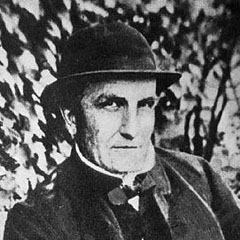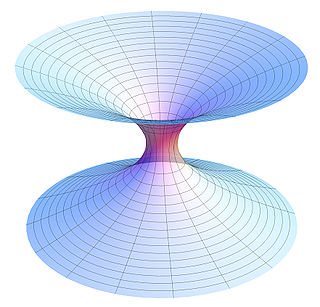Related Research Articles

Physics is a branch of science whose primary objects of study are matter and energy. Discoveries of physics find applications throughout the natural sciences and in technology. Physics today may be divided loosely into classical physics and modern physics.

Physics is the natural science of matter, involving the study of matter, its fundamental constituents, its motion and behavior through space and time, and the related entities of energy and force. Physics is one of the most fundamental scientific disciplines, with its main goal being to understand how the universe behaves. A scientist who specializes in the field of physics is called a physicist.
Physical science is a branch of natural science that studies non-living systems, in contrast to life science. It in turn has many branches, each referred to as a "physical science", together called the "physical sciences".
The following outline is provided as an overview of and topical guide to physics:
In physics, statistical mechanics is a mathematical framework that applies statistical methods and probability theory to large assemblies of microscopic entities. It does not assume or postulate any natural laws, but explains the macroscopic behavior of nature from the behavior of such ensembles.

William Thomson, 1st Baron Kelvin,, or Lord Kelvin, was a British mathematician, mathematical physicist and engineer born in Belfast. He was the Professor of Natural Philosophy at the University of Glasgow for 53 years, where he undertook significant research and mathematical analysis of electricity, the formulation of the first and second laws of thermodynamics, and contributed significantly to unifying physics, which was then in its infancy of development as an emerging academic discipline. He received the Royal Society's Copley Medal in 1883, and served as its president from 1890 to 1895. In 1892, he became the first British scientist to be elevated to the House of Lords.

Josiah Willard Gibbs was an American scientist who made significant theoretical contributions to physics, chemistry, and mathematics. His work on the applications of thermodynamics was instrumental in transforming physical chemistry into a rigorous inductive science. Together with James Clerk Maxwell and Ludwig Boltzmann, he created statistical mechanics, explaining the laws of thermodynamics as consequences of the statistical properties of ensembles of the possible states of a physical system composed of many particles. Gibbs also worked on the application of Maxwell's equations to problems in physical optics. As a mathematician, he invented modern vector calculus.

A timeline of events in the history of thermodynamics.
In physics and chemistry, the law of conservation of energy states that the total energy of an isolated system remains constant; it is said to be conserved over time. Energy can neither be created nor destroyed; rather, it can only be transformed or transferred from one form to another. For instance, chemical energy is converted to kinetic energy when a stick of dynamite explodes. If one adds up all forms of energy that were released in the explosion, such as the kinetic energy and potential energy of the pieces, as well as heat and sound, one will get the exact decrease of chemical energy in the combustion of the dynamite.

Henry Cavendish was an English natural philosopher and scientist who was an important experimental and theoretical chemist and physicist. He is noted for his discovery of hydrogen, which he termed "inflammable air". He described the density of inflammable air, which formed water on combustion, in a 1766 paper, On Factitious Airs. Antoine Lavoisier later reproduced Cavendish's experiment and gave the element its name.

Ludwig Eduard Boltzmann was an Austrian physicist and philosopher. His greatest achievements were the development of statistical mechanics, and the statistical explanation of the second law of thermodynamics. In 1877 he provided the current definition of entropy, , where Ω is the number of microstates whose energy equals the system's energy, interpreted as a measure of statistical disorder of a system. Max Planck named the constant kB the Boltzmann constant.

John James Waterston was a Scottish physicist and a neglected pioneer of the kinetic theory of gases.

The annus mirabilis papers are the four papers that Albert Einstein published in Annalen der Physik, a scientific journal, in 1905. These four papers were major contributions to the foundation of modern physics. They revolutionized science's understanding of the fundamental concepts of space, time, mass, and energy. Because Einstein published these remarkable papers in a single year, 1905 is called his annus mirabilis.
- The first paper explained the photoelectric effect, which established the energy of the light quanta , and was the only specific discovery mentioned in the citation awarding Einstein the Nobel Prize in Physics.
- The second paper explained Brownian motion, which established the Einstein relation and led reluctant physicists to accept the existence of atoms.
- The third paper introduced Einstein's theory of special relativity, which used the universal constant speed of light to derive the Lorentz transformations.
- The fourth, a consequence of the theory of special relativity, developed the principle of mass–energy equivalence, expressed in the famous equation and which led to the discovery and use of atomic energy decades later.

The history of thermodynamics is a fundamental strand in the history of physics, the history of chemistry, and the history of science in general. Owing to the relevance of thermodynamics in much of science and technology, its history is finely woven with the developments of classical mechanics, quantum mechanics, magnetism, and chemical kinetics, to more distant applied fields such as meteorology, information theory, and biology (physiology), and to technological developments such as the steam engine, internal combustion engine, cryogenics and electricity generation. The development of thermodynamics both drove and was driven by atomic theory. It also, albeit in a subtle manner, motivated new directions in probability and statistics; see, for example, the timeline of thermodynamics.
Edwin Crawford Kemble was an American physicist who made contributions to the theory of quantum mechanics and molecular structure and spectroscopy. During World War II, he was a consultant to the Navy on acoustic detection of submarines and to the Army on Operation Alsos.

Theoretical physics is a branch of physics that employs mathematical models and abstractions of physical objects and systems to rationalize, explain and predict natural phenomena. This is in contrast to experimental physics, which uses experimental tools to probe these phenomena.

Temperature is a physical quantity that expresses quantitatively the perceptions of hotness and coldness. Temperature is measured with a thermometer.

Physics is a scientific discipline that seeks to construct and experimentally test theories of the physical universe. These theories vary in their scope and can be organized into several distinct branches, which are outlined in this article.
Elizabeth Garber (1939–2020) was an American historian of science known for her work on James Clerk Maxwell and the history of physics. She was a professor of history for many years at Stony Brook University.

A History of the Theories of Aether and Electricity is any of three books written by British mathematician Sir Edmund Taylor Whittaker FRS FRSE on the history of electromagnetic theory, covering the development of classical electromagnetism, optics, and aether theories. The book's first edition, subtitled from the Age of Descartes to the Close of the Nineteenth Century, was published in 1910 by Longmans, Green. The book covers the history of aether theories and the development of electromagnetic theory up to the 20th century. A second, extended and revised, edition consisting of two volumes was released in the early 1950s by Thomas Nelson, expanding the book's scope to include the first quarter of the 20th century. The first volume, subtitled The Classical Theories, was published in 1951 and served as a revised and updated edition to the first book. The second volume, subtitled The Modern Theories (1900–1926), was published two years later in 1953, extended this work covering the years 1900 to 1926. Notwithstanding a notorious controversy on Whittaker's views on the history of special relativity, covered in volume two of the second edition, the books are considered authoritative references on the history of electricity and magnetism as well as classics in the history of physics.
References
- 1 2 3 4 5 6 7 8 9 10 "Collection: Stephen G. Brush papers | Archival Collections". archives.lib.umd.edu. Retrieved 2020-09-02.
- ↑ "History of Science Society website". 2018-07-24.
- ↑ "Advisory Council". ncse.com. National Center for Science Education. Archived from the original on 2013-08-10. Retrieved 2018-10-30.
- ↑ "APS Fellow Archive". www.aps.org. Retrieved 2018-07-25.
- ↑ "Elected Fellows". AAAS - The World's Largest General Scientific Society. 2016-10-21. Retrieved 2018-07-25.
- ↑ "HSS Pfizer Award website". 2018-07-24.
- ↑ "APS PAIS Awards". 2018-07-24.
- ↑ "University of the Sciences 2015 Commencement honorary degree conferment to Stephen G. Brush". YouTube . Retrieved July 26, 2018.
- 1 2 "Stephen G. Brush - German Wikipedia". 2018-07-24.